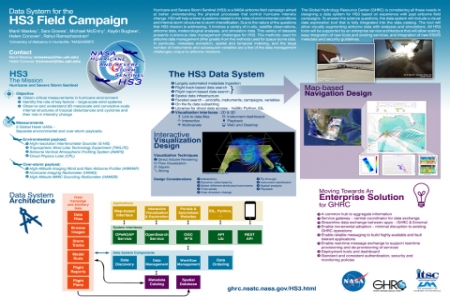Hurricane and Severe Storm Sentinel (HS3) is a NASA airborne field campaign aimed at better understanding the physical processes that control hurricane intensity change. HS3 will help answer questions related to the role of environmental conditions and internal storm structures to storm intensification. Due to the nature of the questions that HS3 mission is addressing, it involves a variety of in-situ, satellite observations, airborne data, meteorological analyses, and simulation data. Variety of datasets present various data management challenges for HS3. The methods used for airborne data management differs greatly from the methods used for space-borne data. In particular, metadata extraction, spatial and temporal indexing, large number of instruments and subsequent variables are few data management challenges unique to airborne missions. A robust data system is required to successfully help HS3 scientist achieve their mission goals. Furthermore, the data system also needs a data management that assists in broader use of HS3 data to enable future research activities. The Global Hydrology Resource Center (GHRC) is considering all these needs and designing a data system for HS3. Experiences with past airborne field campaign puts GHRC in a good position to address HS3 needs. However, the scale of the mission along with science requirements separates HS3 from previous field campaigns. HS3 data system will include automated services for geo-location, metadata extraction, discovery, and distribution for all HS3 data. To answer the science questions, the data system will include a visual data exploration tool that is fully integrated into the data catalog. The tool will allow visually augmenting airborne data with analyses and simulations. Satellite data will provide contextual information during such explorations. All HS3 tools will be supported by an enterprise service architecture that will allow scaling, easy integration of new tools and existing services, and integration of new ESDIS metadata and security guidelines.


